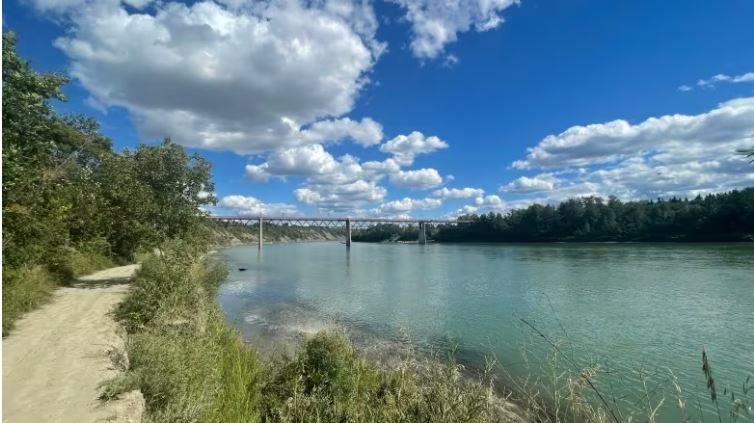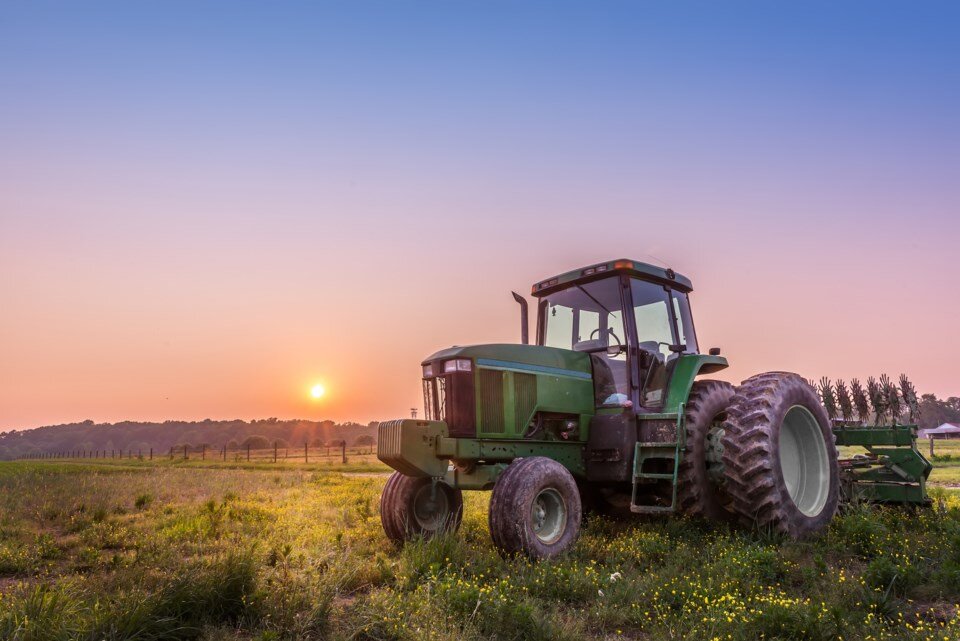Much of Alberta and Saskatchewan relies on water from melting snow in the Rocky Mountains for replenishment of waterways in the summer. But John Pomeroy — director of the University of Saskatchewan's Coldwater Laboratory in Canmore, Alta. — told CBC that this past winter provided one of the lowest snowpacks he's seen. The snow also melted about six weeks earlier than anticipated, fuelled by the unseasonably warm weather.
Canada Water Agency to be located in Winnipeg
If you’re looking to locate ground zero for water issues on a map of Canada, just stick a pin a few kilometres east of Winnipeg. From frequent major flooding on two major rivers to the polluting of the seventh largest freshwater lake in the world, to farmers’ struggles with saturation and drought, to chronic problems with water quality on Indigenous reserves, water is often a top-of-mind issue in the province.
How the health of a river is influenced by what's happening on land
For some residents of northern Alberta and Saskatchewan, the North Saskatchewan River is nothing more than a flowing body of water that starts at the Saskatchewan Glacier in Banff National Park and winds its way northeast. But it's much more than that. The river is a part of a bigger network of streams and channels that feed into it on its path through the Prairies. We're talking about a watershed — an area of land that drains into a water body.
Data shows Ontario, Quebec have worst water quality in Canada
A report from Environment and Climate Change Canada said Ontario and Quebec have the poorest water quality in Canada, according to Blacklock’s Reporter. “Calculated trends using data from 2002 to 2020 show no site with improved water quality,” said the report. “During that same period, water quality deteriorated at 24 sites.” Water quality showed no improvement in the past two decades because of raw sewage dumped into waterways. Regional waterways with worsening quality included Ottawa’s Rideau River, Toronto’s Humber and Don rivers, and Quebec’s Chateauguay, Jacques-Cartier, and la Petite Nation rivers.
Hydro once made up around half of Alberta's power capacity. Why does Alberta have so little now?
When you think about renewable energy sources on the Prairies, your mind may go to the wind farms in southern Alberta, or even the Travers Solar Project, southeast of Calgary. Most of the conversation around renewable energy in the province is dominated by advancements in solar and wind power. But what about Canada's main source of electricity — hydro power?
Climate Changed: First Nation balances Western science with traditional knowledge
The Prairie Blood coulee winds through a property on the Kainai Nation, also known as the Blood Tribe, in southern Alberta. On a warm fall day, about a dozen people haul willows, mulch, dirt and water to several spots along a dry creek bed. Some pound large posts into the ground. Technicians from Blood Tribe and volunteers from local environmental groups are building five beaver dam analogs, which mimic a natural logjam. They hope to restore the stream flow to help the landowner care for his animals and have more water for wildlife as the area experiences a decade-long drought.
BLOG: An Ontario problem, a prairie concern
In the spring of 2018, Health Canada proposed a ban on all agricultural uses of two insecticides, thiamethoxam and clothianidin. Health Canada scientists said the insecticides, known as neonics, were accumulating in ponds, creeks and other water bodies near agricultural land. The concentrations were harmful to midges and mayflies and therefore posed a threat to birds and other animals that rely on the insects for food.
Wings Over Water documentary captivates audiences with a bird's eye view of the Prairies TELUS World of Science - Edmonton hosts Canadian premiere of 3D IMAX® film
A stunning new nature documentary, Wings Over Water, will make its Canadian debut this Friday at the TELUS World of Science - Edmonton. The IMAX® film follows the migratory journeys of three bird species that make remarkable, and often harrowing, flights to the wetlands of North America's prairies to breed and raise their young. Audiences will be captivated by the stories of the sandhill crane, yellow warbler and mallard as they soar across one of the most important—yet little known—ecosystems on the continent.
BREAKING THE ICE
A drive through the Canadian Rockies will treat you to views of blue mountain lakes, wildlife and, of course, glaciers. But with our changing climate and warming winters, glaciers are receding at an alarming rate in Canada and around the world. Globally that will impact sea levels while here on the Prairies, the loss of our Rocky Mountain glaciers will affect our freshwater supply. “We’re past the tipping point for the glaciers in the Canadian Rockies,” says John Pomeroy, professor and Canada Research Chair in water resources and climate change at the University of Saskatchewan.
https://www.canadaland.com/podcast/776-prairie-poop-bots-floods-and-water-shortages/
Canada might be a water-rich country, but that doesn't mean we don't have problems with water security. This week, we look at water issues in the most arid part of Canada, the Prairies, and see how climate change and city planning are both exacerbating the problem. Did you know during a recent storm the City of Winnipeg released 60 million litres of raw sewage into the Red River? Did you know the City of Morden, Manitoba almost ran out of potable water during the extreme drought last summer?
After weeks of moisture, drought conditions ease in parts of Prairies
Steve Donald has one word to sum up the current condition of his southeast Saskatchewan farmyard: "Muck." The 42-year-old grain and cattle farmer near Moosomin, Sask. — just over 200 kilometres east of Regina — says repeated spring snowstorms have delayed seeding on his land. But he's optimistic the extra moisture will provide adequate feed and water for his cattle, and better growing conditions.
Snowy winter provides blast of hope in some parts of drought-stricken Prairies
It just keeps coming. More snow. For many parts of the Canadian Prairies, it's more of the white stuff than they've seen in years. At Stan Jeeves's cattle and grain farm near Wolseley, Sask., 100 kilometres east of Regina, strong winds have blown the snow into huge piles that engulf his hay bales. He's already had more than 60 centimetres of snow this winter, compared with just three centimetres at this point last winter, according to Environment Canada data. "I think it's given me some optimism, for sure," Jeeves said. "We're receiving fairly regular snows, and so if that continues through the growing season into timely rains, we should be much better off than we have been in the past two or three years."
What will climate change actually look like on the Prairies?
Though models indicate an overall increase in precipitation, future droughts and soil moisture deficits are projected to be more frequent and intense across the southern Canadian Prairies during summer by the end of the century under a high-emission scenario. So how does that work? When you look at the water supply chapter of our changing climate, timing is very important. David Sauchyn, director of the Prairie Adaptation Research Collaborative at the University of Regina, is a lead author of a report detailing the changes we can expect in the Prairies as our climate warms.
Prairie livestock producers facing shortage of feed, water as winter sets in
A national farm organization is asking the federal government to pitch in with efforts to move hay from the East Coast to struggling farmers and ranchers in Western Canada. The Canadian Federation of Agriculture is seeking financial support for its Hay West initiative, which aims to ship donated hay from Maritime farmers to drought-affected Prairie provinces.
BEYOND LOCAL: Ancient water management techniques may help farmers experiencing drought
This year witnessed one of the hottest and driest summers in recent history for Western Canada and the American Southwest. The resulting droughts adversely affected food supply and helped send meat prices rising three times faster than inflation. Despite the severity of these droughts, the worst may be yet to come. Extreme weather events are expected to become increasingly severe and frequent in the Prairies, with longer dry periods coupled with the risk of floods from intense rainstorms.
Young Innovators: USask researcher explores water economy on the Prairies
University of Saskatchewan (USask) PhD candidate Leila Eamen and her research team have developed a hydro-economic model that investigates alternative ways to allocate water resources from the Saskatchewan River Basin among the Prairie provinces to maximize economic benefits, such as a province’s gross domestic product. In Saskatchewan, where precipitation has been low and heat levels high in the summer of 2021, such a model has become extremely relevant as natural water supply dwindles.
Canada's waning water supply sows division in farm belt
Where fly fisherman Shane Olson once paddled summer tourists around in a boat, he now guides them by foot – carefully navigating shallow waters one step at a time. “Every year, these rivers seem to be getting smaller, faster,” Olson, 48, said, whipping a gleaming fishing line over the Crowsnest River about 70 kilometres from the U.S. border. It is an alarming trend in Canada’s breadbasket, and a sign of water scarcity to come as climate change speeds the melting of Rocky Mountain glaciers feeding rivers that deliver water to some seven million people across the Prairies.
These techniques are helping Prairie farmers grow crops despite drought
Although drought is a natural part of the climate cycle in the Prairies, climate researchers are warning that droughts will become more common and more intense. "When we think about climate change, I think we can be expecting to experience more drought in the future," says James Famiglietti, a hydrologist with the University of Saskatchewan who has been studying global freshwater availability for over a decade. "[Drought] will become the new normal." But farmers have many tools to deal with this threat. From water reservoirs to drought-resistant crops, farmers the world over are practising various adaptation measures to remain viable.
Maritime farmers doing 'what we can' to get surplus hay shipped to drought-stricken Prairies
Hay from the Maritimes could make its way to the Prairies later this week as livestock producers in Western Canada struggle with devastating drought conditions. The Canadian Federation of Agriculture (CFA) announced last week that it has started work to facilitate a initiative coined "Hay West," that will see surplus hay from farmers in eastern Canada sent west — where dire hay and feed shortages loom. Tim Marsh, president of the Nova Scotia Federation of Agriculture, said farmers in his province have extra and want to help out.
Prairie farmers struggle as drought set to become among worst in Canadian history
Saskatchewan farmer Derek Tallon is harvesting one of the worst lentil crops he's ever grown. Like other farmers in the region, he watched his crops struggle to grow without much rain or reprieve from unrelenting heat during what one expert says is shaping up to be the worst drought in Canadian history. Tallon's farm in southern Saskatchewan only received about 50 millimetres of rain this year, compared to 190 millimetres during a normal year.





















